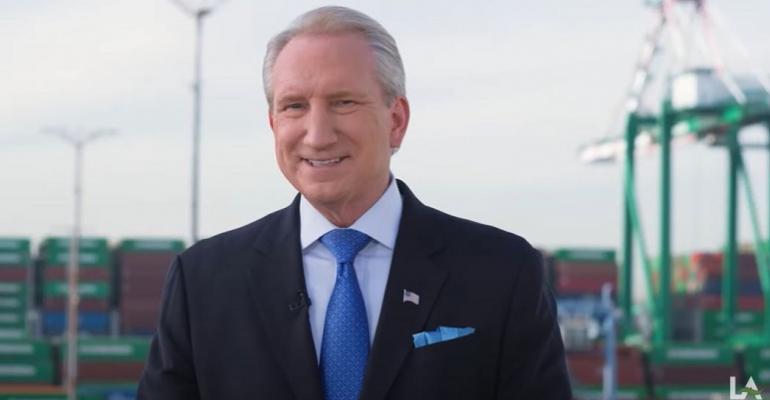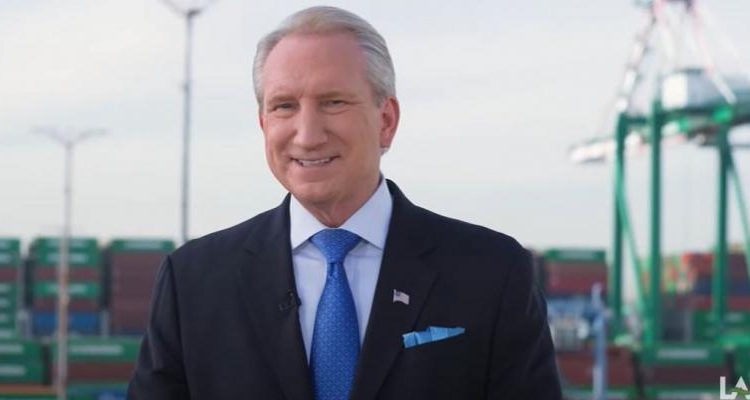
In its mid-September media briefing, the port revealed that The Port of Los Angeles had handled 828,016 teu in August, which it said was a 3% increase compared to the same period in 2022. Importantly, this represented the Port of LA’s first monthly year-on-year increase in 13 months. There is still considerable lost ground to recover; the port noted that: “Eight months into 2023, the Port has processed 5,649,686 teu, 21% less than the same period last year.”
In the media briefing, the port’s Executive Director, Gene Seroka, offered wide ranging remarks concerning developments at the port, stressing the restrained macro-economic realities He said, “Overall, as we navigated through what’s expected to be a muted peak season, global trade is slower overall.”
But against this backdrop, he painted a picture of the port’s engine in full catch-up mode, ready to continue the positive trends embodied in the August statistics, but not instantly. In talking about prospects for the remainder of the year; he said: “We’ll do our level best to improve on last year’s finish, but the market may not be there yet.”
Still, surrounding Seroka’s halting optimism on cargo flows, there were over-arching positives identified within his remarks where he stressed the port’s intentions to gain the confidence of cargo shippers, who would re-direct their shipments through LA after using alternative ports.
He did not see specific returning of flows to LA as a result of draught-restricted moves through the Panama Canal, but stressed the port’s close monitoring of everything related to cargo flows. He said: “It’s our job to stay ahead of the curve, and do as many things as we can to show and demonstrate that we need to be gateway of choice.” Throughout his remarks, he emphasized outreach to port users – “talking to the many stakeholders” – and other players in cargo supply chains.
Very notably, Seroka was effusive with praise for both sides in the now ratified six-year labour deal between the International Longshore and Warehouse Union (ILWU) and the terminal operators under the Pacific Maritime Association (PMA), after noting that concerns about what might happen on the labor front likely contributed to the slump in cargo during the now completed summer months. He also praised the PMA for their role in developing San Pedro Bay’s new vessel queueing protocols, which is buttressing reductions in emissions, an important theme throughout Seroka’s remarks.
Outside commentators have also taken a cautious view on trade-flow economics, reinforcing the Seroka’s reading of the economics at play. A webinar hosted by freighting platform Flexport’s Director of Ocean Trade Lane Management, Los Angeles-based Nathan Strang, presented a nuanced point of view.
In the Q&A session following the presentation, Strang noted that “The biggest thing with labor agreements is that they bring stability”, but added that: “A couple of the terminals here in LA are seeing reduced capacity, and are looking for business….they are all competing.” He went on to explain, “They all expanded, expecting the Covid-push to keep going a little longer than it did.”
In the media Q&A portion of Seroka’s remarks, a pointed question from a journalist regarding prospects for box throughput turning positive in the coming months, noting that overall cargo volumes are still down even though “we are well into the peak season”, was met with a roundabout response: “Of course I am concerned…if this port is healthy, we can do so much for our community,” Seroka said.
After several references to environmental issues, he did circle back to the answer: “History has shown that over the last 21 years, that when cargo shifts away from the West Coast, particularly southern California, some of it will stick at those other ports. That’s why we are being so aggressive and so assertive, trying to get in front of people, hearing their concerns.”
Copyright © 2023. All rights reserved. Seatrade, a trading name of Informa Markets (UK) Limited.

 Tiếng Việt
Tiếng Việt
